Fragmented habitats pose serious challenges for some of the world’s rarest reptiles. Human activities such as deforestation, agriculture, and urbanization have drastically reduced the areas these species once thrived in. As their homes shrink and become isolated, reptiles face increased difficulty finding food, mates, and shelter. Many are also vulnerable to illegal hunting and the pet trade. Without immediate action, these unique reptiles could disappear forever. These species serve as critical indicators of the health of their ecosystems, making their survival all the more important.
Ploughshare Tortoise (Astrochelys yniphora)
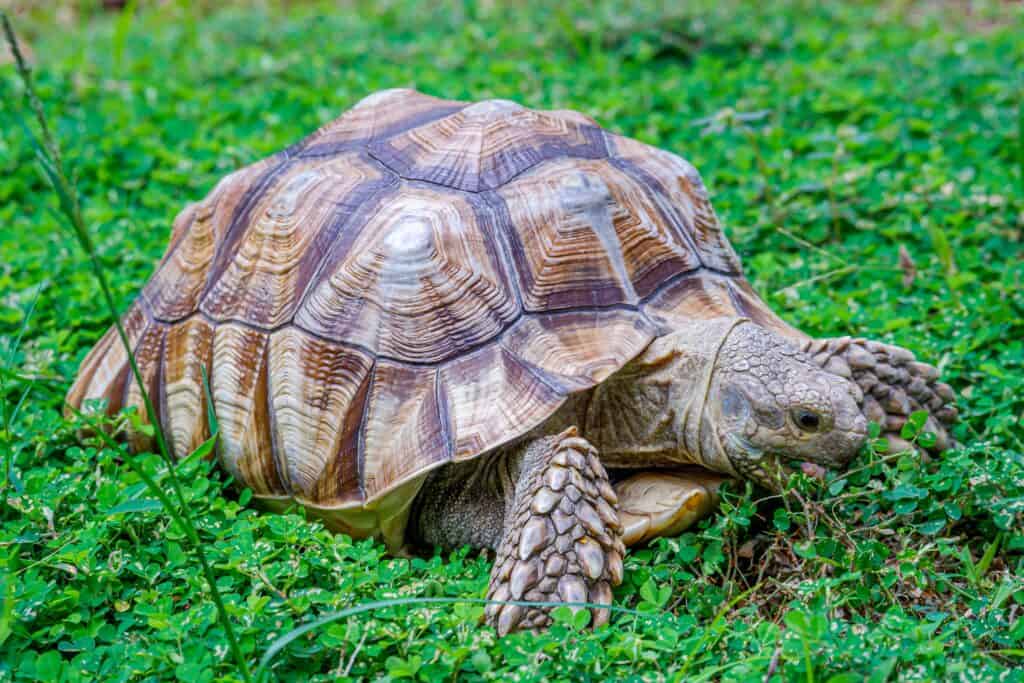
The critically endangered Ploughshare Tortoise, native to the Baly Bay region of northwestern Madagascar, faces significant threats from habitat destruction and illegal poaching. Their distinctive, high-domed golden shells make them a target in the exotic pet trade, further driving their decline. Its habitat consists mainly of dry forests, which have been severely fragmented due to agricultural expansion and illegal logging. With fewer than 500 individuals remaining, their population continues to suffer from habitat loss and human encroachment. Additionally, invasive species pose another threat, competing for limited food resources and disrupting the fragile ecosystem they rely on. Despite efforts to protect them, including anti-poaching patrols and habitat restoration, it remains on the brink of extinction. Conservation breeding programs have been initiated to bolster wild populations. Recent initiatives have seen some success, but without broader efforts to restore their habitat, their long-term survival remains uncertain. Illegal wildlife trade further compounds these problems, increasing the difficulty of safeguarding their small populations.
Psychedelic Rock Gecko (Cnemaspis psychedelica)
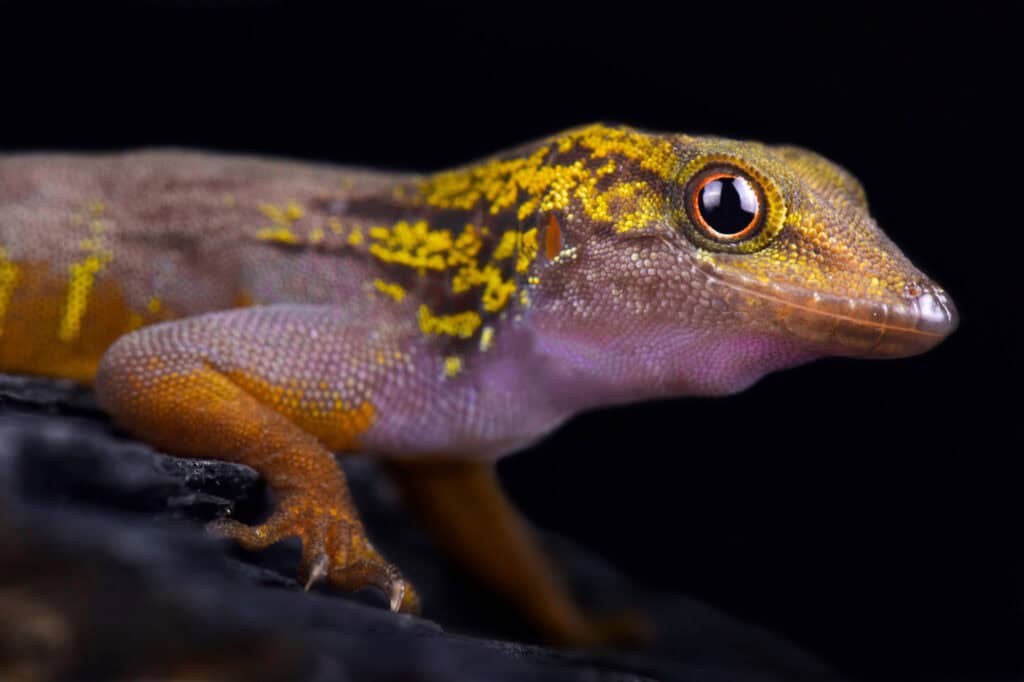
The Psychedelic Rock Gecko, found only on a few small islands off southern Vietnam, has become critically endangered due to illegal collection for the pet trade and habitat destruction. Its striking colors, with vivid blue and orange patterns, make it highly desirable to collectors, which has led to sharp declines in its population. It lives among the rocky outcrops of its native islands, areas that are increasingly threatened by development, tourism, and quarrying. Fragmentation of these rocky habitats not only isolates populations but also exposes them to greater risk from predators. With fewer than 500 individuals estimated to remain, conservation efforts have focused on habitat protection and cracking down on illegal trade. Its specialized habitat makes relocation or expansion into other areas difficult, leaving conservationists with limited options. However, recent awareness campaigns aim to curb demand in the pet trade, offering hope for the future.
Madagascan Big-Headed Turtle (Erymnochelys madagascariensis)
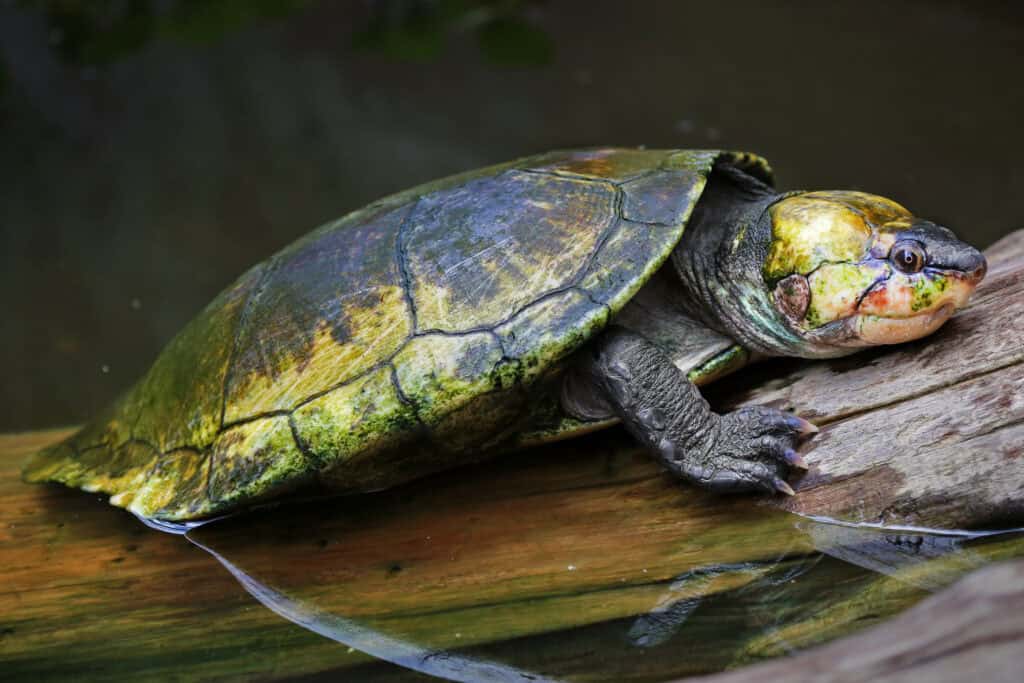
The Madagascan Big-Headed Turtle is another critically endangered species, found in the freshwater rivers and lakes of western Madagascar. Habitat destruction, driven by deforestation and wetland drainage for agriculture, has fragmented its natural range, severely limiting its population. It is also hunted for its meat and traded in the illegal pet market, which exacerbates its decline. The species plays a crucial role in its ecosystem, helping to control plant and insect populations, but its numbers have plummeted to fewer than 500 individuals. Conservationists are working on habitat restoration projects and stricter enforcement of poaching laws to protect the remaining populations. Its ability to survive in highly specific habitats makes conservation efforts particularly challenging. Without proper protection of its freshwater ecosystems, this ancient species faces imminent extinction.
Geometric Tortoise (Psammobates geometricus)
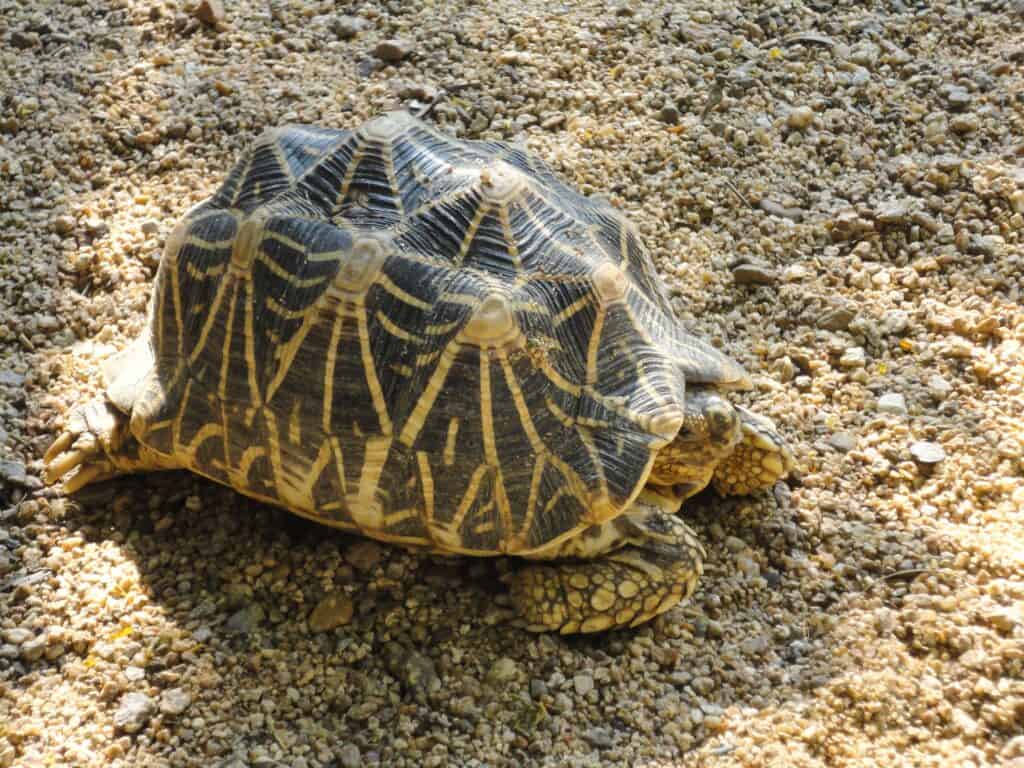
The Geometric Tortoise, native to South Africa’s fynbos biome, is critically endangered due to habitat loss from urbanization and agricultural development. This small tortoise, known for its strikingly beautiful shell patterned with geometric shapes, relies on a specific type of vegetation found only in its native fynbos. Invasive plant species, particularly non-native grasses, have overrun much of their habitat, disrupting food sources and natural shelter. The population of the Geometric Tortoise is now estimated to be fewer than 1,000 individuals, making it one of the rarest reptiles in Africa. Conservation efforts have been focused on habitat restoration and controlling invasive plants, but its slow reproductive rate further complicates recovery efforts. Additionally, climate change poses a threat by altering the delicate balance of its fynbos ecosystem, making survival even more difficult. Protection of remaining habitats, along with active management of invasive species, is critical to the species’ future. Programs aimed at replanting native vegetation offer a glimmer of hope, but comprehensive landscape-level interventions are still needed.
Siamese Crocodile (Crocodylus siamensis)
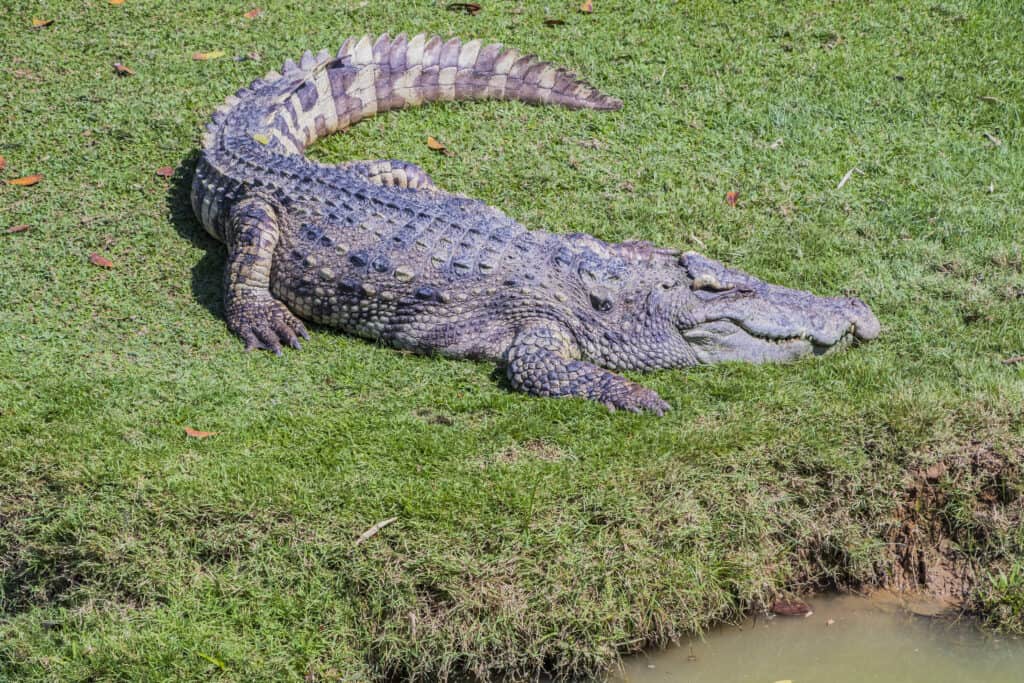
The Siamese Crocodile, found in Southeast Asia’s freshwater rivers, marshlands, and lakes, has seen its numbers dwindle to fewer than 1,000 individuals due to habitat destruction and illegal hunting. Wetland drainage for agriculture, particularly rice farming, has caused extensive habitat fragmentation. Once widespread across Thailand, Cambodia, Laos, and Vietnam, the species is now restricted to isolated pockets of protected areas. Illegal hunting for their skin and meat has decimated populations, despite being a fully protected species under local laws. Conservation efforts include breeding programs and reintroductions, but habitat loss remains a critical challenge to long-term survival. Fragmentation of their aquatic habitats also reduces the availability of suitable nesting sites, further hindering population recovery. Although some progress has been made, large-scale wetland conservation projects are necessary to sustain future populations.
Central American River Turtle (Dermatemys mawii)
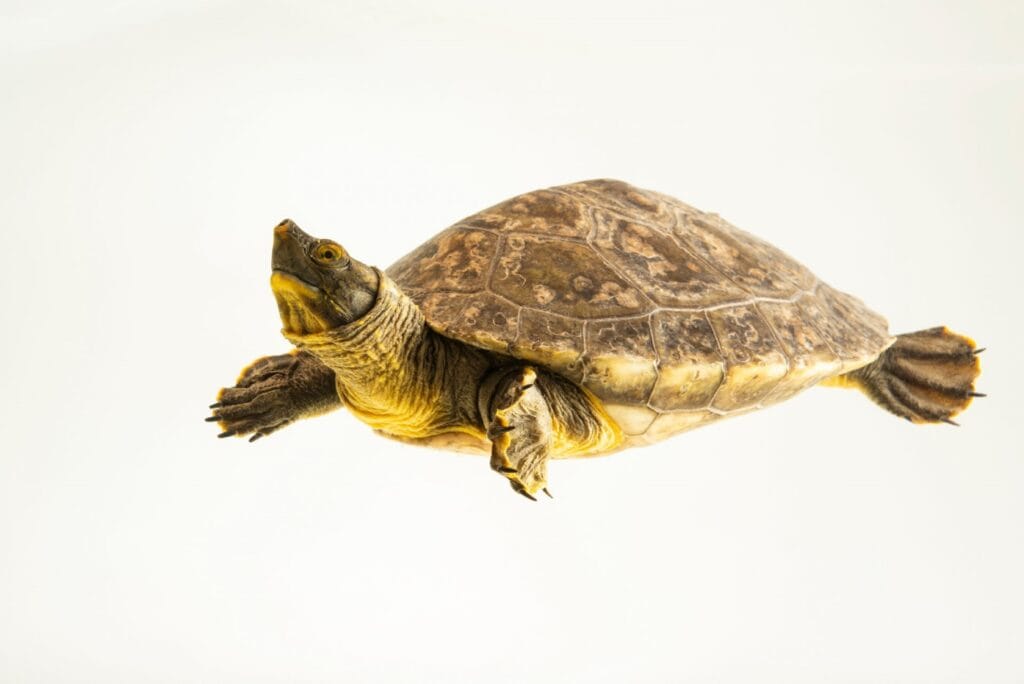
The Central American River Turtle, also known as the “hickatee,” inhabits freshwater rivers and lakes in Belize, Guatemala, and southern Mexico. It faces severe threats from overhunting for its meat and habitat destruction due to agricultural expansion. Its aquatic habitats have been fragmented by dam construction and deforestation, limiting its ability to migrate and reproduce. With fewer than 2,000 individuals left in the wild, its population is critically low, making it one of the most endangered reptiles in Central America. Conservation efforts have been initiated to control hunting and protect vital water habitats, but enforcement remains weak. Habitat fragmentation disrupts breeding sites, as well as access to food, which has further decimated numbers. Protection of their wetlands is vital for recovery, but the challenges of illegal hunting persist.
Roti Island Snake-Necked Turtle (Chelodina mccordi)
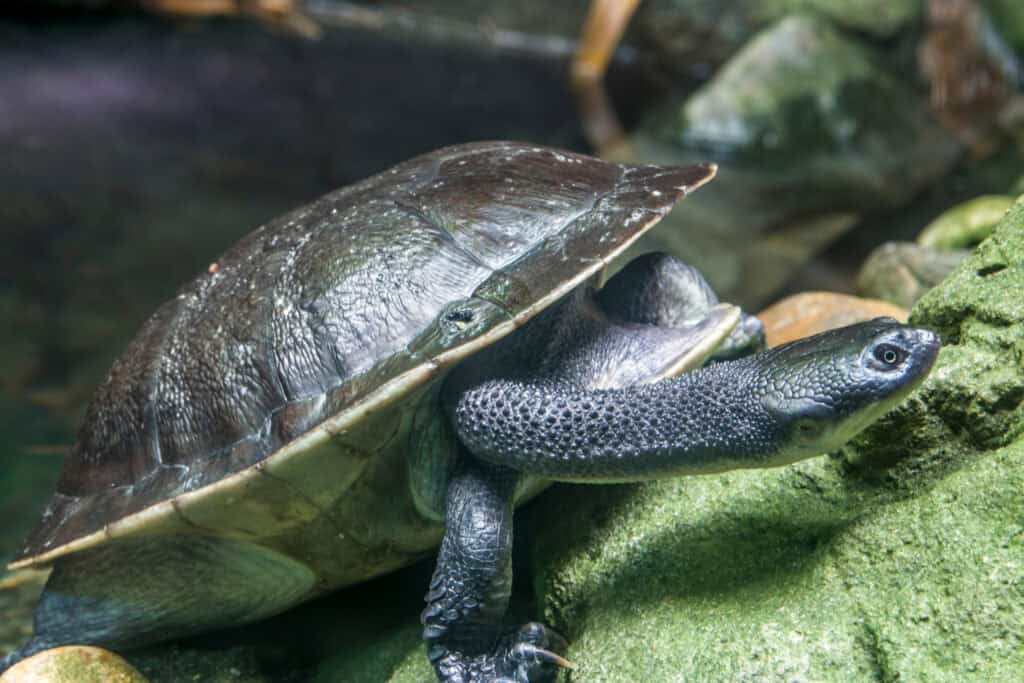
The Roti Island Snake-Necked Turtle, native to the small island of Roti in Indonesia, faces critical threats from habitat destruction and the pet trade. It is highly sought after for its long, distinctive neck, which makes it a unique species in the illegal pet trade. Overcollection has decimated wild populations, with fewer than 500 individuals estimated to remain. Its freshwater habitats, including small streams and ponds, have been severely fragmented by agricultural expansion and deforestation. The limited size of its remaining habitat restricts its ability to recover naturally, as breeding opportunities are reduced. Conservationists have focused on habitat protection and creating breeding programs to bolster wild populations. However, enforcement of wildlife protection laws remains weak in the region.
Flat-Tailed Tortoise (Pyxis planicauda)
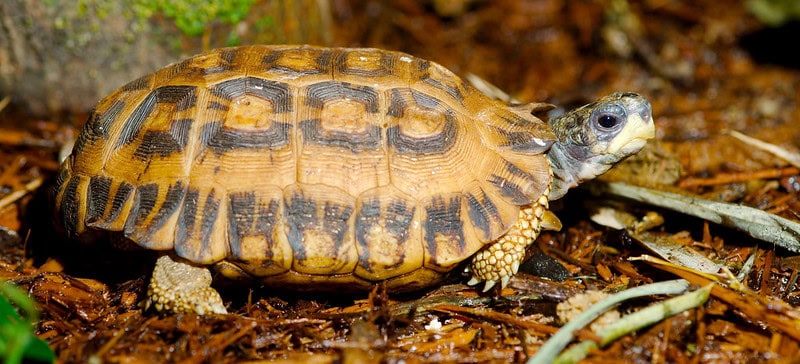
The Flat-Tailed Tortoise, native to the western forests of Madagascar, is critically endangered due to habitat fragmentation and illegal collection for the pet trade. This small tortoise relies on dry deciduous forests, which have been heavily degraded by slash-and-burn agriculture and illegal logging. Habitat fragmentation has isolated populations, making it difficult for individuals to find mates and reproduce. Fewer than 1,000 individuals remain, and conservation efforts focus on habitat protection and cracking down on the illegal pet trade. Reforestation projects and the establishment of protected areas are crucial to the tortoise’s survival, but the slow reproductive rate complicates recovery efforts. Invasive species further threaten it by competing for food and destroying nesting sites.
Chinese Alligator (Alligator sinensis)
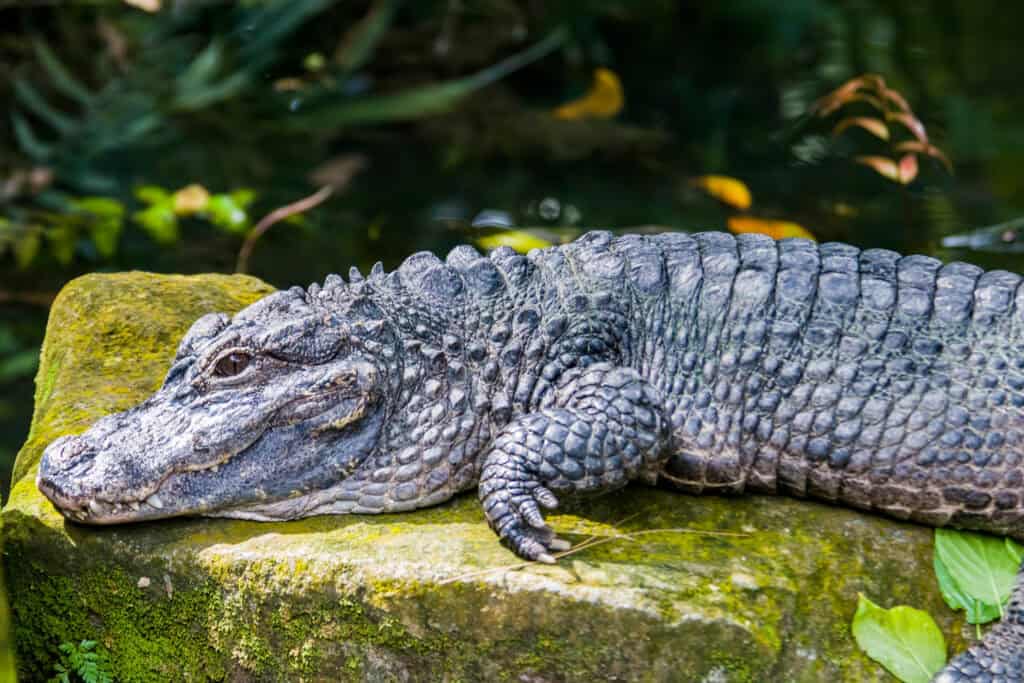
The Chinese Alligator, found in the wetlands of the Yangtze River Basin, is one of the most endangered crocodilians in the world, with fewer than 150 individuals left in the wild. Habitat loss due to agricultural expansion and urban development has severely fragmented its wetland habitats, limiting its range and reducing breeding sites. Dams and irrigation projects have altered its natural habitat, making it difficult for populations to sustain themselves. Conservationists have established breeding programs, and reintroduction efforts are ongoing to restore wild populations. However, its slow growth rate and low reproductive success make recovery difficult. Pollution and the continued conversion of wetlands for rice paddies also threaten their remaining habitats. Habitat restoration and stricter protection of wetland areas are crucial for the long-term survival of this ancient species.
Union Island Gecko (Gonatodes daudini)
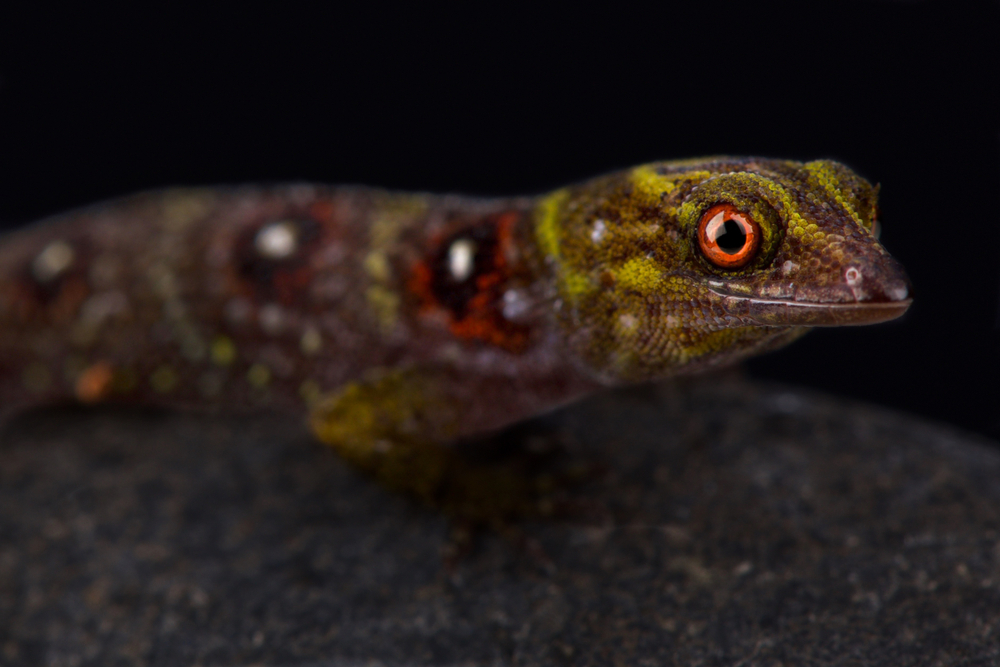
Native to the dry forests of Union Island in the Caribbean, the Union Island Gecko is critically endangered due to illegal collection for the pet trade and habitat destruction. This small, colorful gecko has become a target for collectors, significantly reducing its wild population. Its natural habitat, primarily dry, rocky forest areas, has been fragmented by deforestation and development. With fewer than 1,000 individuals left, the species faces extinction without immediate conservation action. Conservationists have worked with local communities to establish protected areas and crack down on illegal trade, but habitat loss remains a pressing issue. Invasive species, particularly rats and cats, further threaten the gecko by preying on its eggs and young.
Gharial (Gavialis gangeticus)
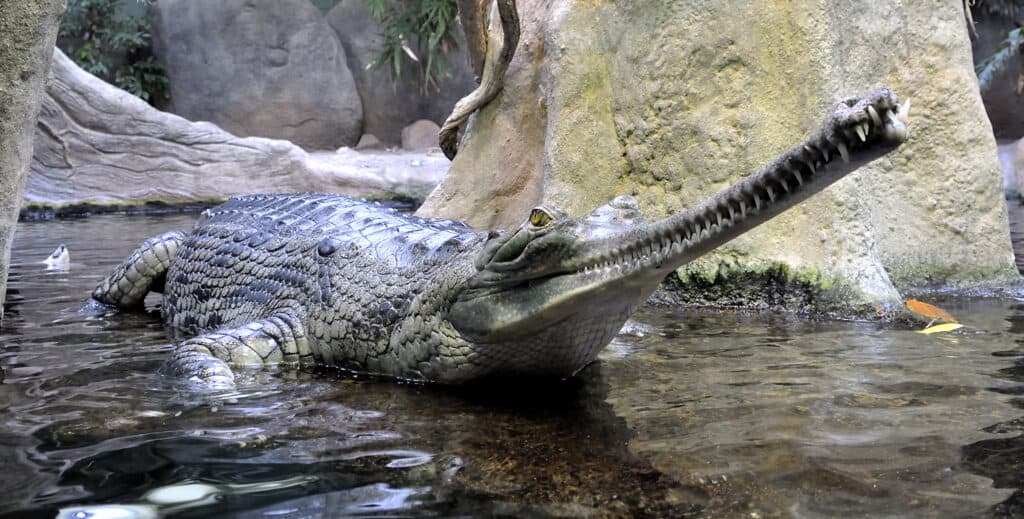
The Gharial, a critically endangered crocodilian species, is found in the rivers of northern India and Nepal. Its elongated snout, adapted for catching fish, makes it one of the most distinctive reptiles in the world. However, river fragmentation due to dam construction, sand mining, and agriculture has severely restricted its habitat. Its breeding sites along riverbanks have been destroyed, and pollution from industrial and agricultural runoff has further degraded its remaining habitats. With fewer than 1,000 individuals left, conservation efforts have focused on river restoration and creating protected areas along key rivers. However, its specialized habitat requirements and slow reproductive rate complicate recovery. Efforts to reduce human-wildlife conflict, particularly with local fishing communities, are also critical for the species’ survival.
This article originally appeared on Rarest.org.
More from Rarest.org
11 Highly Desired Antique Kitchenware Items Collectors Treasure

Collecting antique kitchenware offers a glimpse into history while adding charm to any kitchen or display. From durable cast iron skillets to delicate china patterns, these items have both functional and decorative value. Read More.
14 Mysterious Lost Civilizations That Still Puzzle Historians
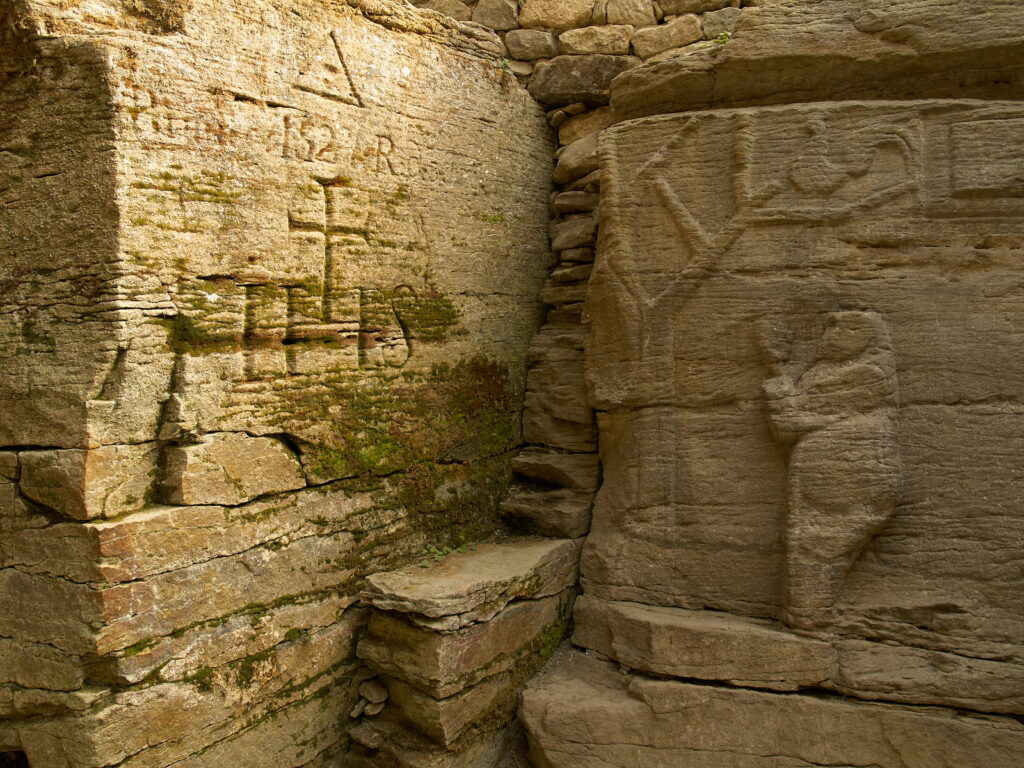
Throughout history, many civilizations have risen to greatness, only to mysteriously vanish, leaving behind ruins and unanswered questions. These lost cultures, once thriving and influential, continue to puzzle historians and archaeologists alike. Read More.
19 Unique Freshwater Fish Thriving in Lakes and Rivers

Freshwater lakes and rivers are home to a fascinating array of unique fish species, each thriving in its own way within these diverse ecosystems. From ancient predators to gentle giants, these fish have adapted to a wide range of environments, showcasing remarkable traits and behaviors. Read More.
